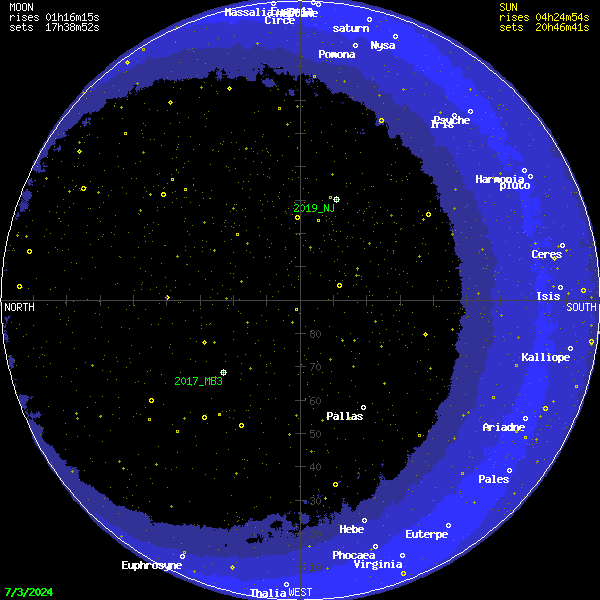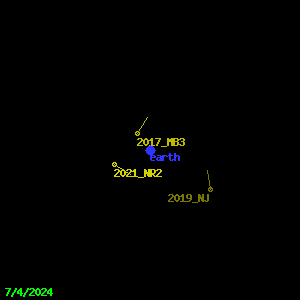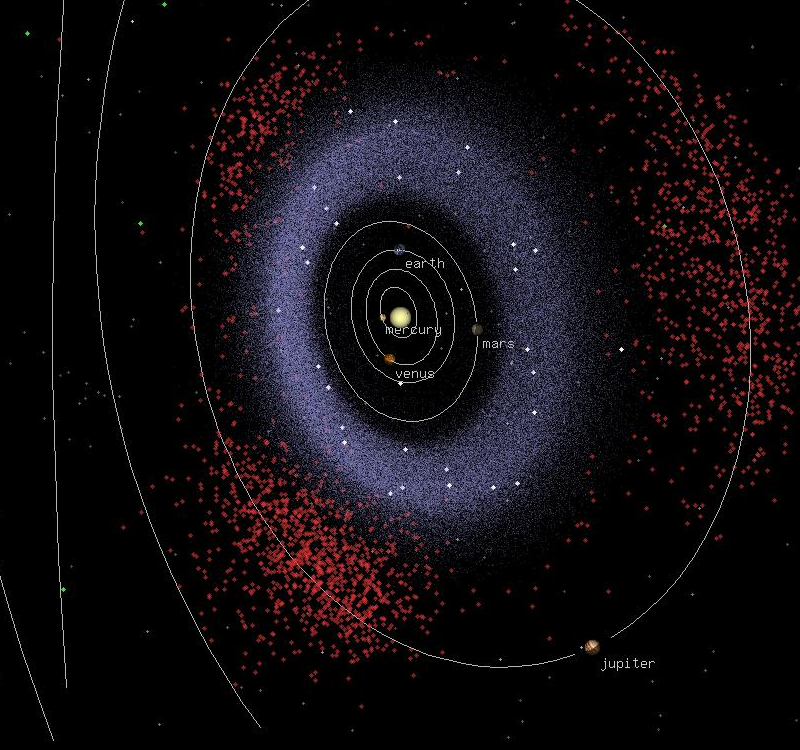This is some fun stuff, using my own library for calculating ephemerides of solar-system objects. Note that I am assuming unperturbed Kepler orbits for all objects so all predictions are only of reasonable accuracy for times close to the epoch for which the orbital parameters are given.
The orbital parameters for planetoids and asteroids are based on data from Lowell Minor Planet Services.
Night sky in Bonn this midnight
This shows my prediction for the night sky in Bonn for midnight (UT+1h) at the day shown at the bottom left of the figure. Of stars (yellow) only the brighter ones with less than six magnitudes are shown. Who can spot some familiar constellations? Try the great dipper or cassiopeia in the north (left).

The white objects depict predicted positions for minor or larger planets.
The blue band is a density band (logarithmic scale) for known, mostly very small, asteroids on the sky; it typically comprises several 100k objects. As most of the asteroids are in the ecliptic plane of the solar system, the band highlights the ecliptic on the sky.
The green labels point at near-earth objects that are closer than 20 lunar distances.
The moon or sun rising and setting times are for UT+1h, hence they do not account for daylight saving time.
Asteroids close to earth
This plot shows all asteroids in the database that are closer than 20 lunar distances (LD) from the earth; brighter colours correspond to smaller distances. The figure is a projection onto the ecliptic plane with the earth at the centre, and the scale is 20 LD along each axis. The whiskers at each position indicate the direction of motion relative to earth (earth is at rest in this frame).

This can be quite busy here, but do not worry (too much): most of these objects are small or have a very tiny chance of crashing into earth. Besides, there are people monitoring this.
I have got a table of all asteroids shown below, their current (UT+1h) distance from earth in LD, relative velocity to earth, and (linearly) projected closest distance, and the time of closest distance. Click on the object's name to search for more information on the web.
Flight through the solar system
This wires the database with my Tiny 3D Engine to produce a little movie. Click on the picture to start the movie.

Clearly, the sizes of the planets and the sun do not scale for illustration purposes.
Small bodies are shown as dots in four different colors and sizes, mostly depending on their distance D from the sun: the bigger minor planets are depicted in bright white, they populate the asteroid belt; the other inner objects (D<4 AU) are small dots in gray-blue, they are mainly asteroid belt objects; small objects between 4 AU<D<10 AU are shown in red, they are mainly Jupiter trojans in sync with the Jupiter position; D>10 AU are shown in green, they are Centaurs and trans-neptunian objects (TNOs).